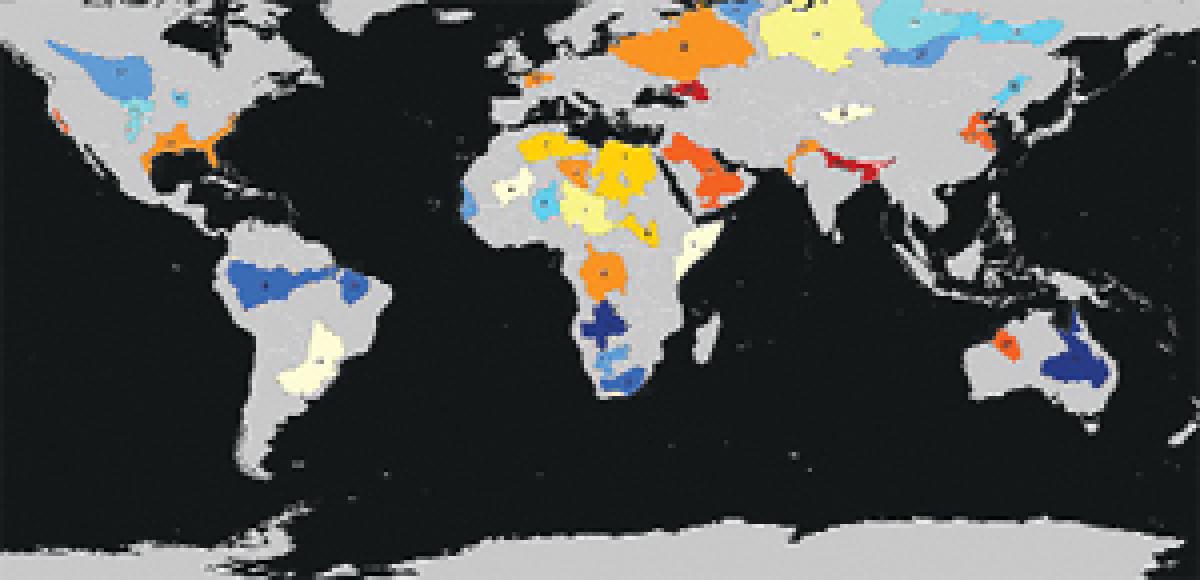Live
- Discover Advanced Sleep Technology with Magniflex India’s Massaggio Light Mattress
- Universal Children’s Day: A celebration of rights and welfare
- Raising awareness for lung health
- PKL goes international: Pro Kabaddi Melbourne Raid set to be played in Melbourne on December 28
- Telangana Government Takes Decision on Reservoir Silt Removal
- Record Cannabis Burn in Telangana: Police Destroy Goods Worth Rs. 37 Crore
- Telangana Govt. Decides to Dredge Reservoirs
- HYDRA Commissioner Visits Ameenpur Municipality
- Chandrababu announces village roads will be constructed similar to National Highways
- Realme GT 7 Pro India Launch: Battery Change, Key Features, and Specifications
Just In

World’s Biggest Groundwater Basins Are Under Stress. The Indus Basin of north-western India and Pakistan is the second-most overstressed groundwater basin in the world and is suffering rapid depletion from human use, scientists have found.
.jpg) Washington: The Indus Basin of north-western India and Pakistan is the second-most overstressed groundwater basin in the world and is suffering rapid depletion from human use, scientists have found.
Washington: The Indus Basin of north-western India and Pakistan is the second-most overstressed groundwater basin in the world and is suffering rapid depletion from human use, scientists have found.
Two new studies led by University of California - Irvine using data from NASA Gravity Recovery and Climate Experiment satellites has found that a third of the world's biggest groundwater basins are in distress.
Civilisation is rapidly draining some of its largest groundwater basins, yet there is little to no accurate data about how much water remains in them, the researchers said.
The result is that significant segments of the planet's population are consuming groundwater quickly without knowing when it might run out, researchers said.
The researchers found that the Arabian Aquifer System, an important water source for more than 60 million people, is the most overstressed in the world suffering rapid depletion with little or no sign of recharging.
The Indus Basin aquifer of north-western India and Pakistan is the second-most overstressed, and the Murzuk-Djado Basin in northern Africa is third.
California's Central Valley, utilised heavily for agriculture and suffering rapid depletion, was slightly better off but still labelled highly stressed in the study.
"Given how quickly we are consuming the world's groundwater reserves, we need a coordinated global effort to determine how much is left," said UCI professor and principal investigator Jay Famiglietti, who is also the senior water scientist at NASA's Jet Propulsion Laboratory.
The studies are the first to characterise groundwater losses via data from space, using readings generated by NASA's twin GRACE satellites that measure dips and bumps in Earth's gravity, which is affected by the weight of water.
For the first study published in the journal Water Resources Research, researchers examined the planet's 37 largest aquifers between 2003 and 2013. The eight worst off were classified as overstressed, with nearly no natural replenishment to offset usage.
Another five aquifers were found, in descending order, to be extremely or highly stressed, depending upon the level of replenishment in each - still in trouble but with some water flowing back into them.
In a companion study published in the same journal, the scientists concluded that the total remaining volume of the world's usable groundwater is poorly known, with often widely varying estimates, but is likely far less than rudimentary estimates made decades ago.
By comparing their satellite-derived groundwater loss rates to what little data exists on groundwater availability, they found major discrepancies in projected "time to depletion."
"We don't actually know how much is stored in each of these aquifers. Estimates of remaining storage might vary from decades to millennia," said Alexandra Richey, lead author on both studies.

© 2024 Hyderabad Media House Limited/The Hans India. All rights reserved. Powered by hocalwire.com







